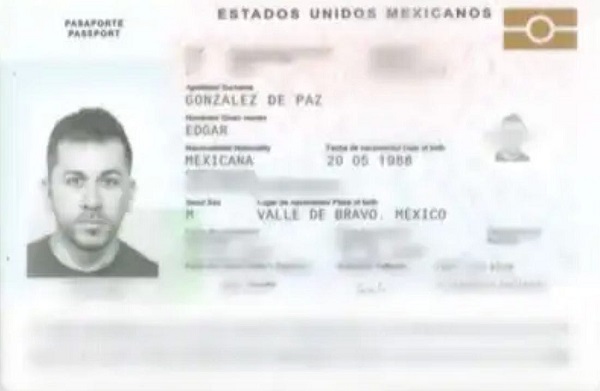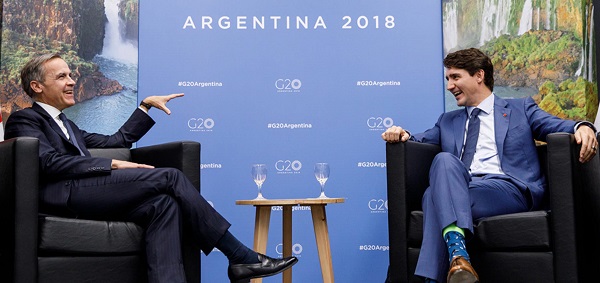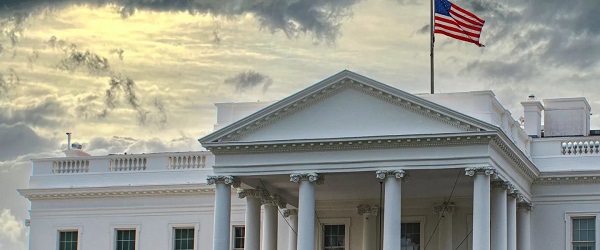illegal immigration
‘Military-aged’ Chinese men are suspiciously gathering in Panama, journalist warns Tucker

From LifeSiteNews
By Matt Lamb
‘What I began to suspect was that the Chinese migration is actually being cloaked by the economic migration coming from South America,’ journalist Brett Weinstein told Tucker Carlson.
Young Chinese males are gathering en masse at a “camp” in Panama, an independent observer told Tucker Carlson recently.
Bret Weinstein is a former college professor and evolutionary biologist by training who was forced out of academia after opposing racial identity politics. He and his wife are now commentators and researchers willing to challenge liberal ideology on topics such as the COVID jabs.
San Vincente, Panama is not really a city, but rather a “camp,” Weinstein told Carlson.
“In this camp, the rule that you’re able to go in and walk around and talk to people, is not in evidence,” Weinstein said.
Guards did not let him in to the camp, but Weinstein was able to approach the Chinese migrants outside of the camp at several shops.
He said they are not willing to talk to outsiders.
“It is not a friendly migration,” Weinstein warned. He said most of the migrants are male and “military-aged.” There are “few, if any children,” in this group.
“What I began to suspect was that the Chinese migration is actually being cloaked by the economic migration coming from South America,” the journalist said. The Chinese migrants have a “different motivation,” he said. In fact, the migrants bypassed the more dangerous Darien Gap to get to Panama, since they have the money to hire boats.
“There was no desperation in evidence,” he told Tucker a few minutes later, saying that the people coming through were not people coming from poor countries. He also said his friend with him found a cartoon video in Chinese that appeared to show people how to travel through Central America.
The Darien Gap divides South America from Central America and is normally too dangerous to try to cross. However, there China, Weinstein suggested later in the interview, might be interested in closing the gap.
At just “one edge of the camp” he saw 150 people, but the amount must be much larger, he speculated.
His concerns are further confirmed by a recent “60 Minutes” report that found Chinese migrants are the “fastest growing group trying to cross into the U.S. from Mexico.”
“Last year, U.S. Customs and Border Protection reported 37,000 Chinese citizens were apprehended as they illegally crossed the border; that’s 50 times more than two years earlier,” CBS News reported.
Weinstein said that the mass migration through Central America into the U.S. begins in Ecuador, where people can enter without a visa.
He also said the United States and the United Nations are underwriting the migration, which is primarily economic, not political.
He said:
You see NGO emblems all over the place, proudly American flags. They’ve paid for the water system, the toilets that are there. The United States government is facilitating this economic migration. And it’s unmistakable, as is an organization called the IOM, which is the International Organization for Migration. It’s a branch of the UN. And if you read their charter, tou will discover that this organization believes that migration is an inherently good thing, that it’s always good. And so they see it as their job to bring it about to facilitate it. And in this case, that’s particularly tragic because their desire to induce people to migrate is causing people who are woefully unprepared for the Darien Gap to try to make that journey. And, the humanitarian tragedy is … immense.
He said border controls are “effectively lifted” at the Panama border. He lived and visited Panama decades ago and the situation was much different. “That’s clearly the result of a massive coordination. And, of course, it’s resulting in a large migration.”
Border patrol can, but isn’t, tracking migrants coming into the U.S.
Weinstein further warned that U.S. officials are not collecting basic “biometric” information on migrants that would be helpful identifying a “troublemaker.”
“What we’re doing at most is asking them their name and their birth date and taking them at their word,” he said. In contrast, he shared when he returned from Panama, a camera scanned his face and border patrol knew his name immediately.
Weinstein said he thinks “there is an invasion taking place” and referred to the migrants as “sleepwalkers” as opposed to sleeper cells.
“And there’s also a massive migration,” he told Carlson. “And the migration is causing us to have difficulty discussing the invasion, which is a distinct phenomenon.”
The Darien Gap, as noted, is dangerous to cross. The 60-mile-long Gap “hosts some of the highest mountain ridges in Panama, as well as hundreds of rivers and heavily forested valleys,” the pro-migration Human Rights Watch reported. “It is inhabited only sparsely, mostly by Indigenous communities and criminal gangs that benefit from the absence of government authorities.”
Yet, Weinstein suggests China might be looking to pave a passage through as part of its Belt and Road Initiative. The program involves China building infrastructure in different countries as part of a soft power approach.
“What many people who know about the Belt and Road Initiative don’t know is that they have also…the Belt and Road Initiative is largely about Africa and Asia, but apparently there’s been a considerable amount of thinking in China about how Belt and Road would work in the New World as well,” Weinstein said.
He said he observed a “massive concrete and steel highway bridge, being built over the to river into the Darién,” though it’s not clear who is building it.
Weinstein also warned that a plan by some Democratic leaders, such as Senator Dick Durbin of Illinois, to make it easier for migrants to serve in the military is dangerous. He theorized that the COVID jab mandates were meant to create a military that was entirely “compliant’ and followed even immoral orders.
He said:
Now, what happens if migrants are given citizenship in exchange for military service in the U.S. military? That seems to create a major hazard, because the perverse incentives for a migrant and the lack of allegiance to fundamental American values means that that would be just the kind of force that could be used to impose tyranny on other Americans because they would have, you know, no history with us that would cause them to think twice.
The Chinese are long-term thinkers, Weinstein said, which causes him concern about what is happening.
“Maybe I’m imagining what I saw. But if I’m not, then all of those Chinese migrants who don’t want to talk about what they’re doing moving into the U.S.. They’re going to do something,” he said. “I don’t know what it’s going to be, but I don’t know when we became so naive about the fact that we have. There are parties abroad who do not wish us well and would not mind at all seeing us, removed from our position of power.”
Carlson noted there are plenty of economic opportunities in China and other surrounding countries.
The Darien Gap is not an “obvious” place for unemployed Chinese people, Carlson said.
Panama doesn’t seem concerned about mass migration
Though hundreds of thousands of people are moving through Panama, leaving trash and bodies behind, the country doesn’t seem concerned, Weinstein said.
“Mostly they don’t say anything. And what we were told was that this was kind of the deal, that if they ushered people through, they facilitated their movement, then those people would keep going,” he said. “And this is a temporary cost for Panama. I think if the people of Panama thought that the migration was going to stop and they were going to have to absorb all of these migrants, there would be riots in the streets.”
Weinstein concluded by reiterating his concerns about the COVID jabs. He called them “gene therapy.”
“The message that was injected into so many people was like a firmware update,” the evolutionary biologist said. “It was a firmware update that caused the immune systems of those people to take up a new way of viewing the world.” He and Tucker noted the Chinese had rejected the mRNA vaccines.
He questioned why, if the COVID shots were so good, they had to be forced onto people.
He called it “conspicuous” there was an “absolutely obsession” with everyone getting jabbed could not be explained just by corporate greed.
“And the fact that we specifically insisted on vaccinating the entire military and threw people out who wouldn’t take it. We vaccinated all of our frontline workers,” he said. He recalled what he told his wife during one show. “I said it, even if these are wonderful shots, it seems insane, given that we don’t know what their long-term impacts are, that we would vaccinate all of anybody with them.”
“Especially people we need,” Carlson said, referencing military and frontline healthcare workers.
“The people we need most,” Weinstein responded. He said more must be done to figure out what has been done with the shots and how to fix the harms.
If his concerns are real, “it is essential we figure out how to neutralize the vulnerability.”
Crime
CBSA Bust Uncovers Mexican Cartel Network in Montreal High-Rise, Moving Hundreds Across Canada-U.S. Border

A court document cited by La Presse in prior reporting on the case.
The conviction targets Edgar Gonzalez de Paz, 37, a Mexican national identified in court evidence as a key organizer in a Montreal-based smuggling network that La Presse documented in March through numerous legal filings.
According to the Canada Border Services Agency, Gonzalez de Paz’s guilty plea acknowledges that he arranged a clandestine crossing for seven migrants on January 27–28, 2024, in exchange for money. He had earlier been arrested and charged with avoiding examination and returning to Canada without authorization.
Breaking the story in March, La Presse reported: “A Mexican criminal organization has established itself in Montreal, where it is making a fortune by illegally smuggling hundreds of migrants across the Canada-U.S. border. Thanks to the seizure of two accounting ledgers, Canadian authorities have gained unprecedented access to the group’s secrets, which they hope to dismantle in the coming months.”
La Presse said the Mexico-based organization ran crossings in both directions — Quebec to the United States and vice versa — through roughly ten collaborators, some family-linked, charging $5,000 to $6,000 per trip and generating at least $1 million in seven months.
The notebooks seized by CBSA listed clients, guarantors, recruiters in Mexico, and accomplices on the U.S. side. In one April 20, 2024 interception near the border, police stopped a vehicle registered to Gonzalez de Paz and, according to evidence cited by La Presse, identified him as one of the “main organizers,” operating without legal status from a René-Lévesque Boulevard condo that served as headquarters.
Seizures included cellphones, a black notebook, and cocaine. A roommate’s second notebook helped authorities tally about 200 migrants and more than $1 million in receipts.
“This type of criminal organization is ruthless and often threatens customers if they do not pay, or places them in a vulnerable situation,” a CBSA report filed as evidence stated, according to La Presse.
The Montreal-based organization first appeared on the radar in a rural community of about 400 inhabitants in the southern Montérégie region bordering New York State, La Presse reported, citing court documents.
On the U.S. side of the line, in the Swanton Sector (Vermont and adjoining northern New York and New Hampshire), authorities reported an exceptional surge in 2022–2023 — driven largely by Mexican nationals rerouting via Canada — foreshadowing the Mexican-cartel smuggling described in the CBSA case.
Gonzalez de Paz had entered Canada illegally in 2023, according to La Presse. When officers arrested him, CBSA agents seized 30 grams of cocaine, two cellphones, and a black notebook filled with handwritten notes. In his apartment, they found clothing by Balenciaga, a luxury brand whose T-shirts retail for roughly $1,000 each.
Investigators have linked this case to another incident at the same address involving a man named Mario Alberto Perez Gutierrez, a resident of the same condo as early as 2023.
Perez Gutierrez was accompanied by several men known to Canadian authorities for cocaine trafficking, receiving stolen goods, armed robbery, or loitering in the woods near the American border, according to a Montreal Police Service (SPVM) report filed as evidence.
The CBSA argued before the immigration tribunal that Gonzalez de Paz belonged to a group active in human and drug trafficking — “activities usually orchestrated by Mexican cartels.”
As The Bureau has previously reported, Justin Trudeau’s Liberal Cabinet was warned in 2016 that lifting visa requirements for Mexican visitors would “facilitate travel to Canada by Mexicans with criminal records,” potentially including “drug smugglers, human smugglers, recruiters, money launderers and foot soldiers.”
CBSA “serious-crime” flags tied to Mexican nationals rose sharply after the December 2016 visa change. Former CBSA officer Luc Sabourin, in a sworn affidavit cited by The Bureau, alleged that hundreds of cartel-linked operatives entered Canada following the visa lift.
The closure of Roxham Road in 2023 altered migrant flows and increased reliance on organized smugglers — a shift reflected in the ledger-mapped Montreal network and a spike in U.S. northern-border encounters.
The Bureau is a reader-supported publication.
To receive new posts and support my work, consider becoming a free or paid subscriber.
illegal immigration
Los Angeles declares a state of emergency over ICE deportations

Los Angeles County leaders have declared a state of emergency over Immigration and Customs Enforcement operations, a move that federal officials and conservative leaders are blasting as a political stunt that undermines the rule of law.
JUST IN: Los Angeles County declares a state of emergency in response to the ICE raids, will provide rent relief.
The LA County Board of Supervisors made the move as the Trump admin continues to ramp up the raids.
“The move allows the LA County Board of Supervisors to provide… pic.twitter.com/DqtvvfhWDu
— Collin Rugg (@CollinRugg) October 15, 2025
On Tuesday, the Los Angeles County Board of Supervisors approved a “Proclamation of Local Emergency for Federal Immigration Actions,” with only one supervisor, Kathryn Barger, voting no. The board claimed that ICE raids “created fear, disrupted neighborhoods, and destabilized families, workers, and businesses” across the region.
Supervisor Lindsey Horvath, who introduced the measure, said the declaration “ensures that the full weight of County government is aligned to support our immigrant communities who are being targeted by federal actions.” But critics say the move has nothing to do with public safety and everything to do with shielding criminal illegal aliens from deportation. “The only emergency is the one the residents of Los Angeles face after electing officials who give a middle finger to the law,” an ICE spokesperson told Fox News, adding that the agency is simply enforcing President Trump’s mandate to remove those in the country illegally — including violent offenders.
ICE spokesperson Emily Covington went further, saying, “Perhaps the board should ‘supervise’ funds to support law-abiding fire victims who still haven’t recovered instead of criminal illegal aliens seeking refuge in their sanctuary city. While they publicly fear-monger, I would be shocked if they didn’t agree with ICE removing a child rapist from their neighborhood.”
Attorney General Pam Bondi called the move “illegal” and accused Los Angeles County of aiding and abetting lawbreaking. “They don’t care about their citizens,” Bondi said on Fox News’ Hannity. “It’s hurting our citizens, and we’re going to keep fighting for the American people.” Chair Kathryn Barger — the lone dissenting vote — also warned that the county’s action could trigger federal consequences, noting that “the federal government has sole authority to enforce federal immigration law, and local governments cannot impede that authority.” She added that the county should instead push for “meaningful immigration reform that is fair, pragmatic, and creates legal pathways for those who contribute to our communities.”
The board’s declaration allows county departments to “mobilize resources, expedite contracting and procurement, coordinate interagency response, and request state and federal assistance” for residents impacted by ICE operations. It will remain in effect until the supervisors vote to terminate it. Homeland Security Secretary Kristi Noem announced in August that between June and August, ICE agents arrested more than 5,000 illegal immigrants across Los Angeles County — including gang members, child predators, and murderers. “Families protected. American taxpayers spared the cost of their crimes AND the burden of their benefits,” Noem said at the time. “Thank you to our brave law enforcement officers. Make no mistake: if you are here illegally, we will find you, arrest you, and send you back. This is just the beginning.”
Critics of the county’s new proclamation say it sends the opposite message — one that rewards lawlessness and punishes those enforcing the law. As ICE continues its work to deport violent offenders, Los Angeles’ leadership appears more focused on fighting federal immigration law than on protecting the residents they were elected to serve.
(AP Photo/Eric Thayer)
-

 Health1 day ago
Health1 day agoTens of thousands are dying on waiting lists following decades of media reluctance to debate healthcare
-

 Opinion1 day ago
Opinion1 day agoLandmark 2025 Study Says Near-Death Experiences Can’t Be Explained Away
-

 Alberta5 hours ago
Alberta5 hours agoPremier Smith explains how private clinics will be introduced in Alberta
-

 Carbon Tax2 days ago
Carbon Tax2 days agoCarney fails to undo Trudeau’s devastating energy policies
-

 International2 days ago
International2 days agoCanada’s lost decade in foreign policy
-

 Business1 day ago
Business1 day agoBudget 2025: Ottawa Fakes a Pivot and Still Spends Like Trudeau
-

 armed forces2 days ago
armed forces2 days agoCanada At Risk Of Losing Control Of Its Northern Territories
-

 Business4 hours ago
Business4 hours agoUS Supreme Court may end ‘emergency’ tariffs, but that won’t stop the President





